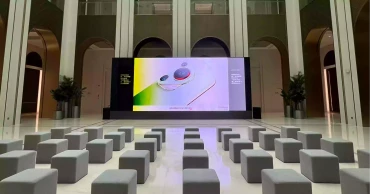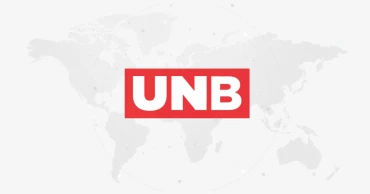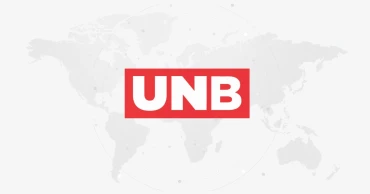Shenzhen
Shenzhen's Rise: From Humble Beginnings to Global Tech Titan
In the late 1970s, Shenzhen was a modest fishing village, tucked away in the southern tip of Guangdong Province, China. With a small population, it was an unlikely candidate for economic stardom. Fast forward to the present day, and Shenzhen has metamorphosed into a bustling metropolis with a population exceeding 17 million — known globally as a hub of innovation and technology.
This transformation is a cornerstone of China's economic reform and a testament to the power of strategic vision and policy.
Shenzhen's remarkable transformation is showcased at the city's Reform and Opening-up Exhibition Hall, which we, a team of visiting Bangladeshi journalists, explored on April 21. Our subsequent tours of Huawei and Mindray Medical International Limited headquarters on the following day further reinforced our impressions of the city's rapid development and technological prowess.
The Catalyst of Change: Economic Reform Policies
The pivotal moment for Shenzhen came in 1980 when it was designated as China's first Special Economic Zone (SEZ) by Deng Xiaoping’s government. This designation intended to attract foreign investment and test market reforms. Shenzhen’s proximity to Hong Kong, a global financial hub, made it an ideal testbed for these reforms.
Read more: PM Hasina likely to travel to India and China in first bilateral visits since forming new govt
The SEZ status conferred unprecedented autonomy on the city in economic decision-making,
Tax incentives, fewer bureaucratic steps, and market-oriented business environment catalyzed an influx of foreign investments.
Infrastructure and Industrialization: Laying the Foundation
Concurrent with policy reforms, Shenzhen's infrastructure underwent a dramatic overhaul. The government invested heavily into building roads, ports, railways, and telecommunications networks, drastically enhancing the city’s connectivity and efficiency. The establishment of the Shenzhen Stock Exchange in 1990 further positioned the city as a financial center.
Industrial parks sprang up around the city, attracting manufacturing units from electronics to pharmaceuticals. The move from a primary focus on manufacturing to include high-tech industries was signalled by giants like Huawei and Tencent establishing their headquarters in Shenzhen. This not only diversified the city’s industrial base but also elevated its status to that of a global technology nexus.
Read more: Chinese delegation meets BGMEA leaders to discuss trade and investment potential
Innovation and Talent Attraction: Fuelling Sustained Growth
Shenzhen's policies have always favored innovation and creativity. The city is now renowned for its robust intellectual property protections which has made it attractive for tech startups and entrepreneurship. In addition, Shenzhen invests heavily in education and R&D, drawing talents from across the globe to its research institutes and think tanks.
The city’s rapid economic expansion is also supported by a unique culture that encourages experimentation and innovation. This is embodied in the landscape of sprawling tech campuses and vibrant startup incubators that dot the city.
Huawei's Robust Growth Amid Diverse Innovations
Huawei Technologies Co. Ltd., a global leader in information and communication technology (ICT) and smart devices, reported a robust revenue of US$97 billion for the year 2023. This financial milestone was prominently fueled by the company's ICT technology infrastructure, which constituted half of the total revenue.
In a strategic push to spearhead technological advancements, Huawei invested a substantial 23.4% of its annual revenue into research and development (R&D) in 2023.
Read more: Arafat appreciates Chinese support for Bangladesh’s development
It also marked a year of solid performance for Huawei’s core ICT infrastructure operations, while its consumer business achieved its set targets efficiently. The company's forays into cloud computing and digital power sectors reported steady growth. Notably, Huawei's intelligent automotive solution business commenced large-scale deliveries, signaling a promising diversification strategy that aligns with global digital transformation trends.
1 year ago
Tecno Spark 20 Review: Budget-friendly phone with a smart look
Tecno Mobile, a Chinese company based at Shenzhen, was established in 2006, as a subsidiary of Transsion Holdings. In the recent years, this brand acquired huge reputation for producing value-for-money smartphones. Spak is the budget-friendly line up of Tecno Mobile. Recently, the brand has launched Tecno Spark 20, an affordable phone with an iPhone-inspired design. This device is now available in Bangladesh. Let’s explore its features in details.
Features and Specifications of Tecno Spark 20
Design
Tecno Spark 20 phone comes with 163.7 mm by 75.6 mm by 8.5 mm dimention. It boasts a larger camera island with three circled rings for the dual cameras and a quad flashlight. The glossy camera island may attract dust, contrasting with the fingerprint-resistant plastic matte finish.
The plastic frame houses a swift side-mounted fingerprint scanner, and while lacking an official IP rating, a rubber ring suggests water resistance to some extent. Dual speakers deliver a surprisingly balanced sound, complemented by a USB C port for charging and a microphone for calls. The comfortably held phone exhibits flat surface, and robust build quality without any creaks or flexing.
Read more: Benco V91 Review: Android experience at BDT 10000
The dynamic port, reminiscent of the iPhone's dynamic island, introduces a touch of sophistication, though its functionality is somewhat constrained.
The vibrant color options, like Neon Gold, Gravity Black, Cyber White, and Magic Skin 2.0 (Blue), Spark 20 presents an eye-catching play of light.
Display
The Tecno Spark 20 sports a 6.6-inch IPS LCD, featuring a commendable 90Hz refresh rate alongside a 720 by 1612 pixels resolution. The enhanced scrolling experience due to the high refresh rate is more perceptible. While the display is satisfactory for its price point, a higher 1080p resolution would have been preferable.
Its punch hole disrupts the display. Besides, it has noticeable bezels, especially the prominent chin at the bottom. However, these limitations are often found in the similarly priced devices.
Read more: Tecno Spark 20C Review: Standard phone under 15000 TK
It’s display customization options offer flexibility, allowing users to fine-tune colors. With a peak brightness of 500 nits under adaptive settings, the screen remains visible outdoors. The ability to stream YouTube videos at 2K resolution produces vibrant and sharp visuals. While responsive to touch and conducive to enjoyable gaming, a desire for a higher resolution lingers, leaving the overall display experience commendable for its budget-friendly nature.
Performance and Software
The Tecno Spark 20 runs on the MediaTek Helio G85 12nm, which, despite being an older chipset, performs well. The phone is smooth with no noticeable lag when using it, and apps open quickly.
Games also run fine, except for heavy ones. It handles everyday tasks like calls, texts, and content consumption without a hitch. Multitasking is decent, except for heavy games. Compared to the Spark 10 with the MediaTek Helio G37, there's an improvement in performance.
Read more: Honor 90 Lite Review: Performance within Budget
1 year ago
Huawei to invest $220 million in cloud ecosystem for 2021
Chinese telecom giant Huawei has announced that it will invest $220 million in the cloud ecosystem this year.
The Huawei Developer Program 2.0 will include the newly announced Huawei Cloud Partner Innovation Program, Kunpeng OpenMind Project, and Ascend OpenMind Project.
Also read: Huawei plans to roll out 6G by 2030
The announcement came at the 2021 Huawei Developer Conference (HDC.Cloud 2021) in China's Shenzhen on Sunday.
"By 2025, 100% of enterprises around the globe will be using cloud technology," Richard Yu Chengdong, executive director of Huawei and CEO of the cloud BU and consumer business group, said at the event.
Read Huawei unveils smart car components
"Cloud is the future of the ICT industry and the foundation for enterprises' digital transformation. Developers are the soul of the industry," he added.
At the HDC.Cloud 2021, Huawei launched six innovative products and services, including Huawei Cloud CCE Turbo cloud container cluster, CloudIDE intelligent programming assistant, Trusted Intelligent Computing Service, and infrastructure software for diversified computing, read a press release.
Read Huawei brings financial aid, free service for Asia-Pacific SMEs
4 years ago
Huawei to invest more in car tech
Localised global ICT solutions provider Huawei will invest more in components for intelligent vehicles.
The Chinese telecom giant's Rotating Chairman Eric Xu announced this at the 18th Global Analyst Summit in Shenzhen on Monday.
The announcement came after the recent disclosure of the financial report of 2020, where the company saw comparatively slower growth than previous years.
Read Huawei brings financial aid, free service for Asia-Pacific SMEs.
"Moving forward, we will continue to find ourselves in a complex and volatile global environment. A resurgence of Covid-19 and geopolitical uncertainty will present ongoing challenges for every organisation, business, and country," Xu said.
"We believe deeply in the power of digital technology to provide fresh solutions to the problems we all face. So we will keep innovating and driving digital transformation forward with our customers and partners to bring digital to every person, home, and organisation for a fully connected, intelligent world."
Read Huawei posts 3.8% growth in 2020.
The first Huawei Global Analyst Summit took place in 2004 and has been held annually ever since.
This year's summit, "Building a Fully Connected, Intelligent World," will run from April 12 to 14 with several breakout sessions where industry experts from around the world can share their unique insights and discuss future trends, read a press release.
Read Huawei to disclose steady business performance in 2020.
4 years ago
Covid-19 testing lab built with air-inflated structure goes into trial operation
A Covid-19 testing laboratory built with an air-inflated structure in Daxing District, Beijing, capital of China went into trial operation on Monday.
5 years ago
Over 10 mln blockchain-based invoices issued in Shenzhen
Blockchain electronic invoices issued in China's tech hub Shenzhen have exceeded 10 million in number as the city promotes e-billing, the Shenzhen Tax Service said Thursday.
6 years ago


.jpg)

.jpg)




